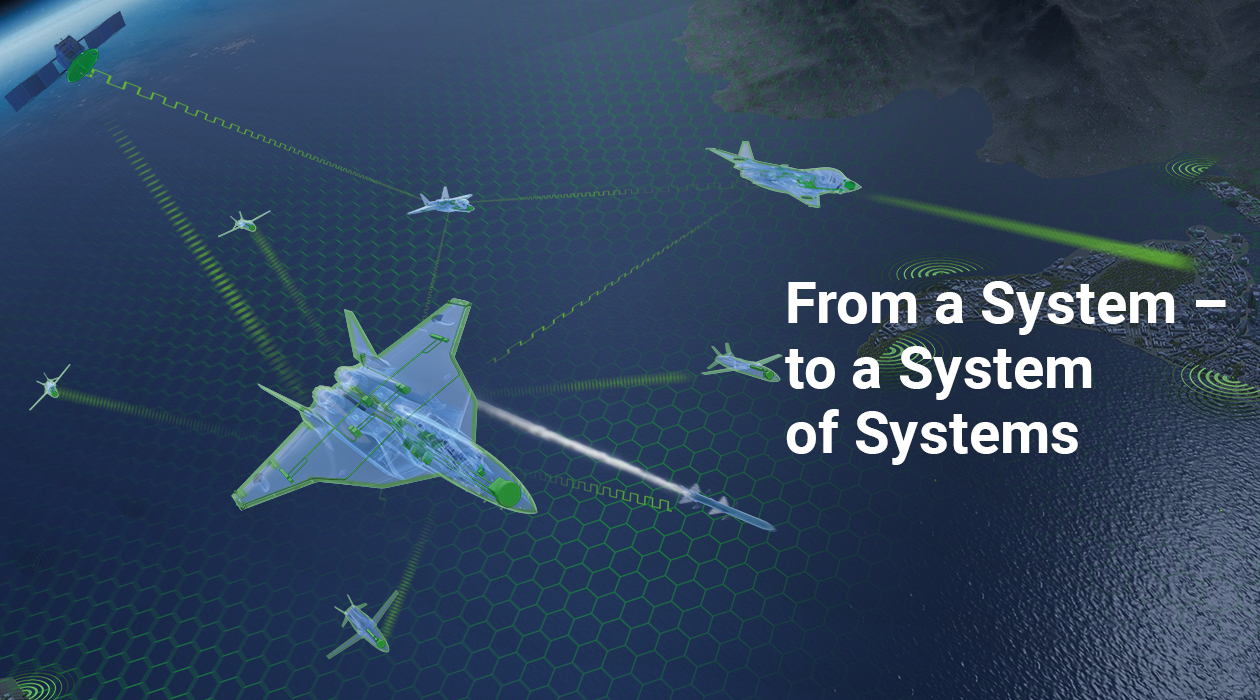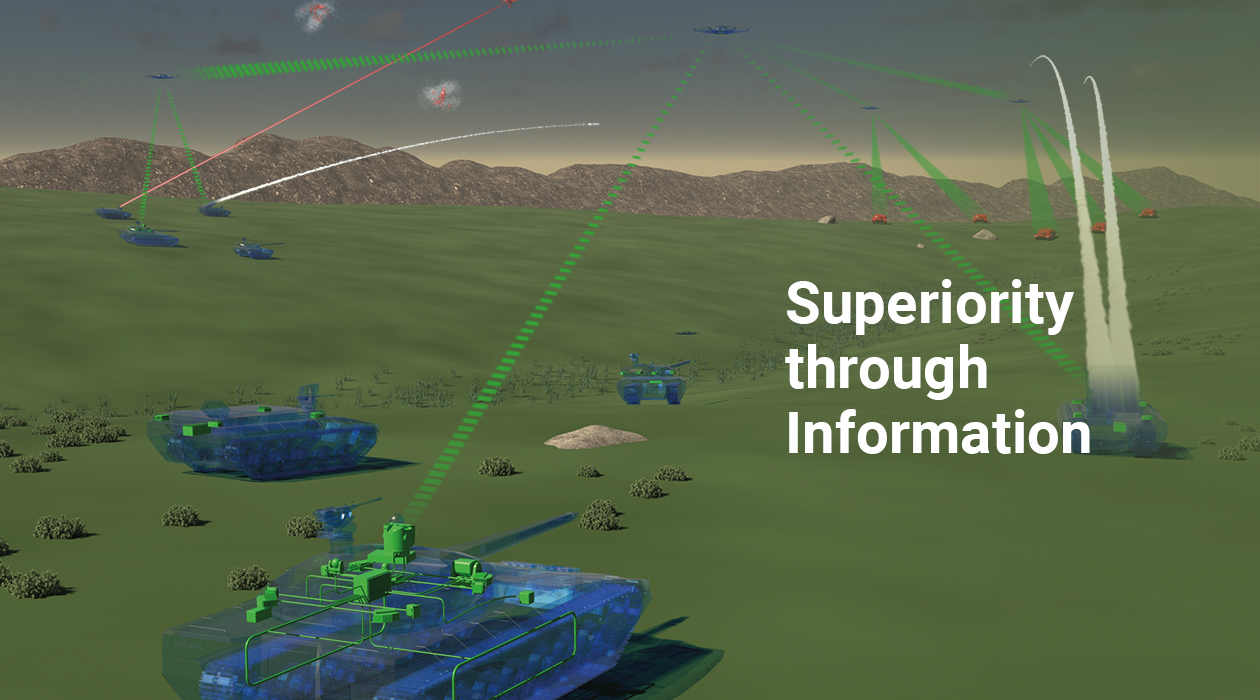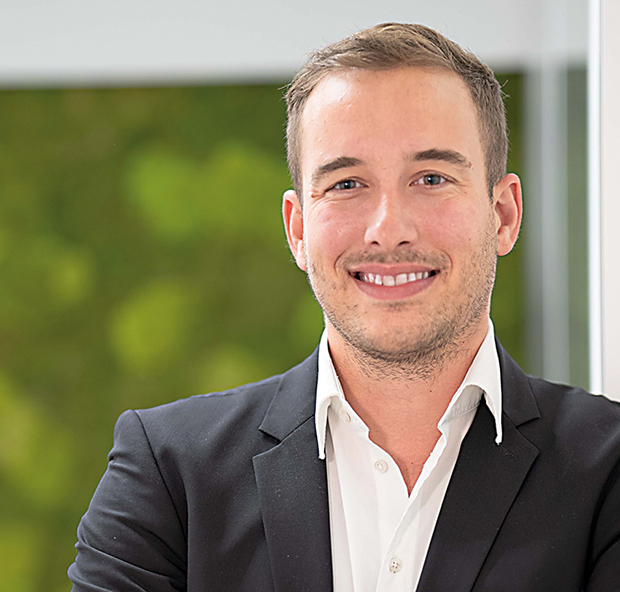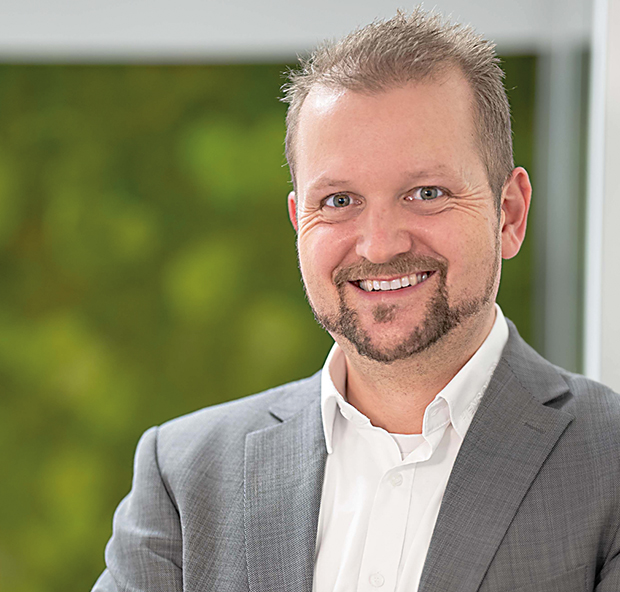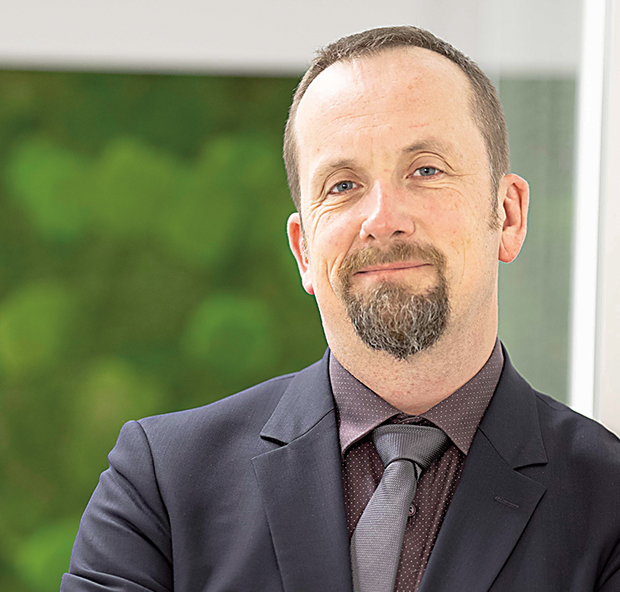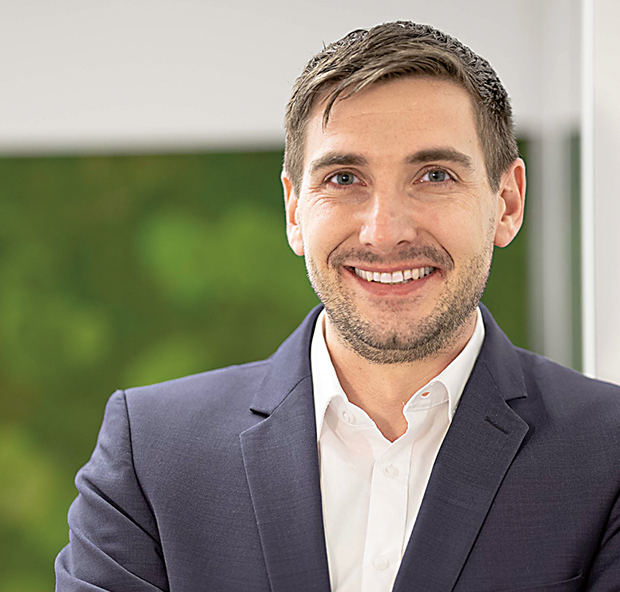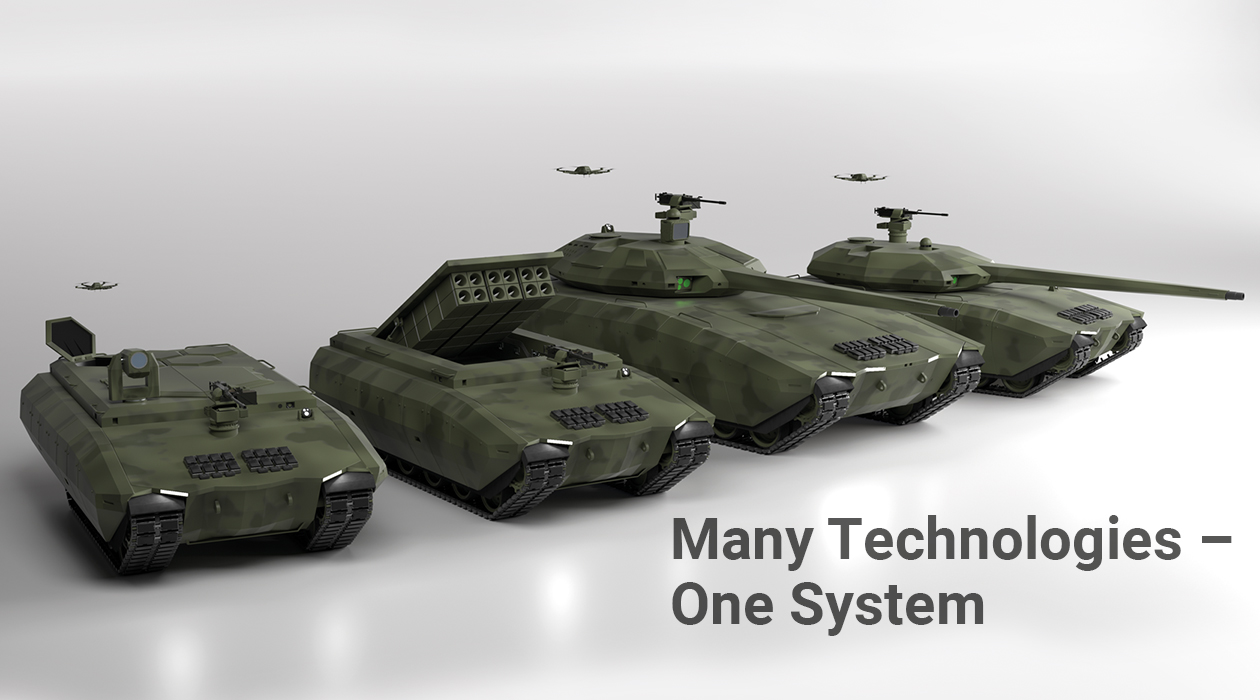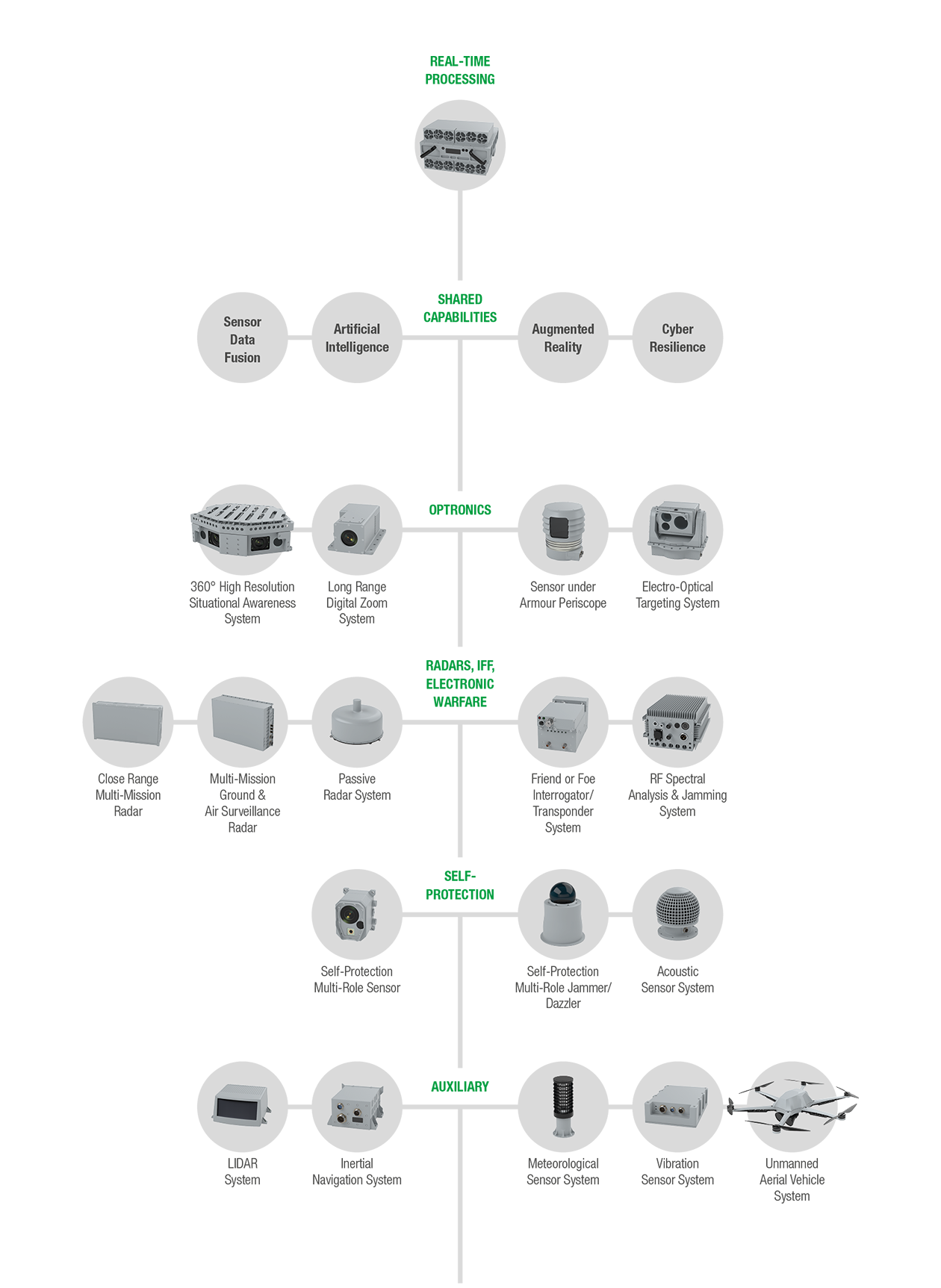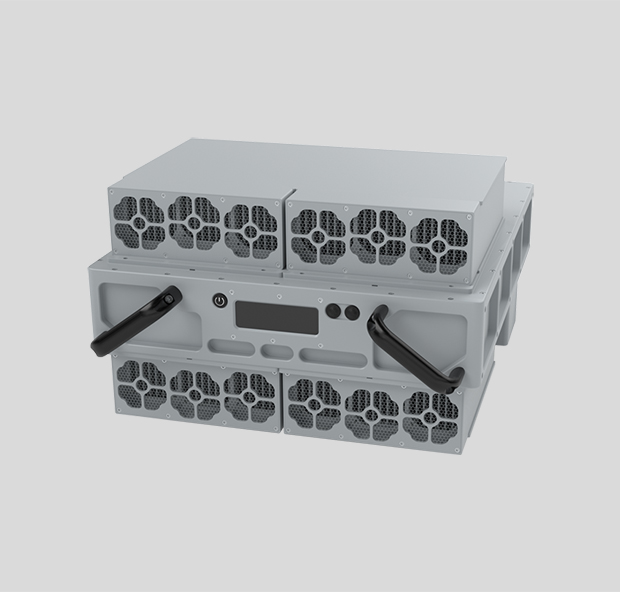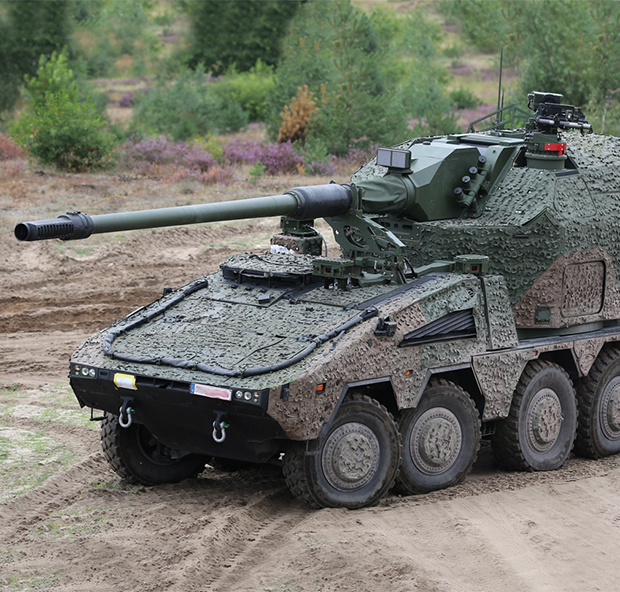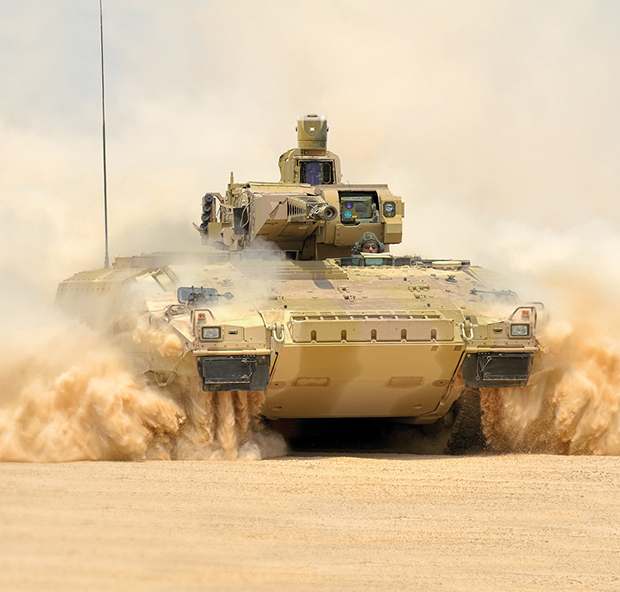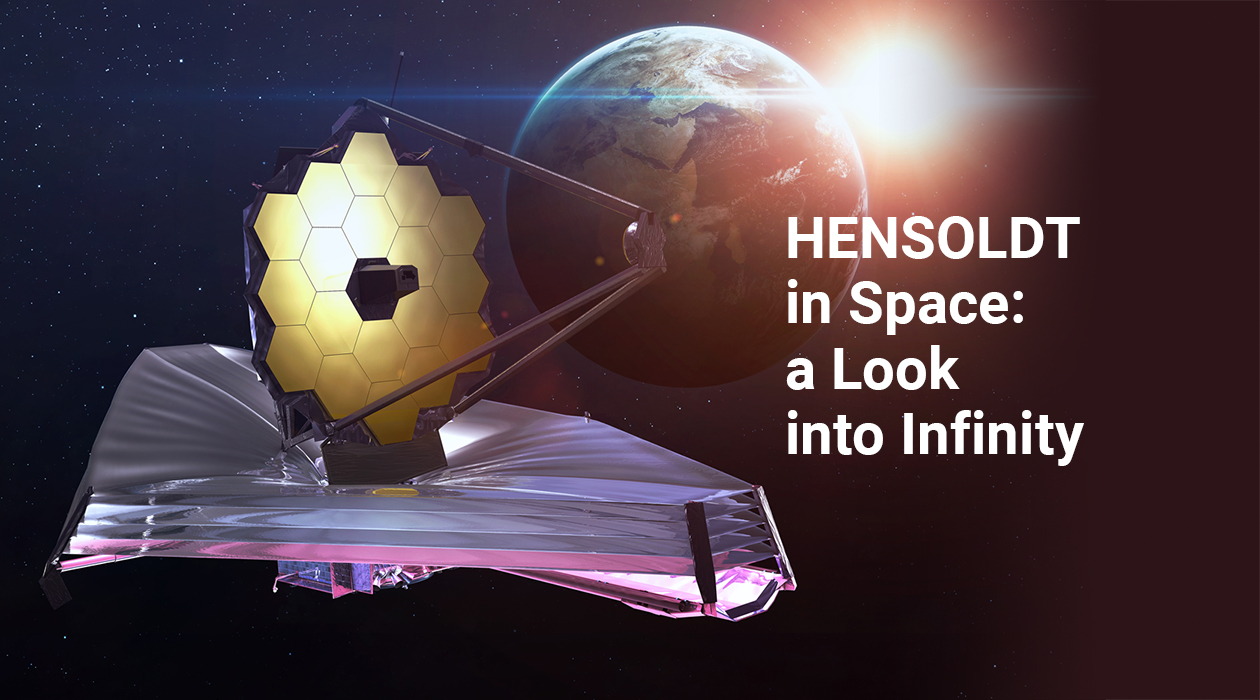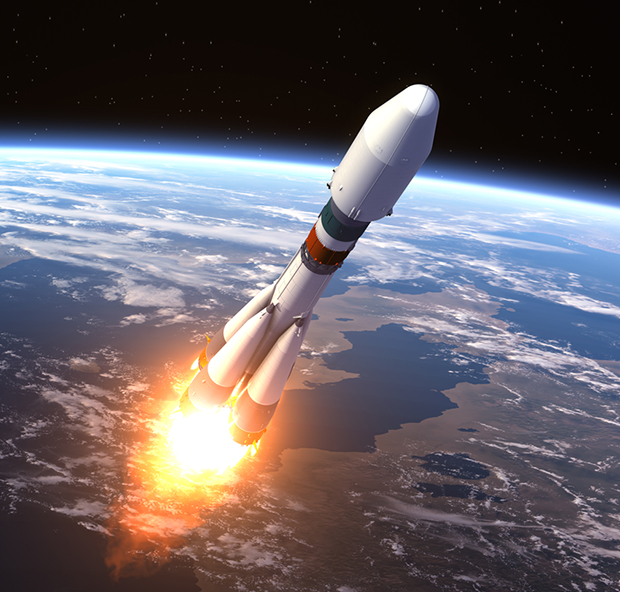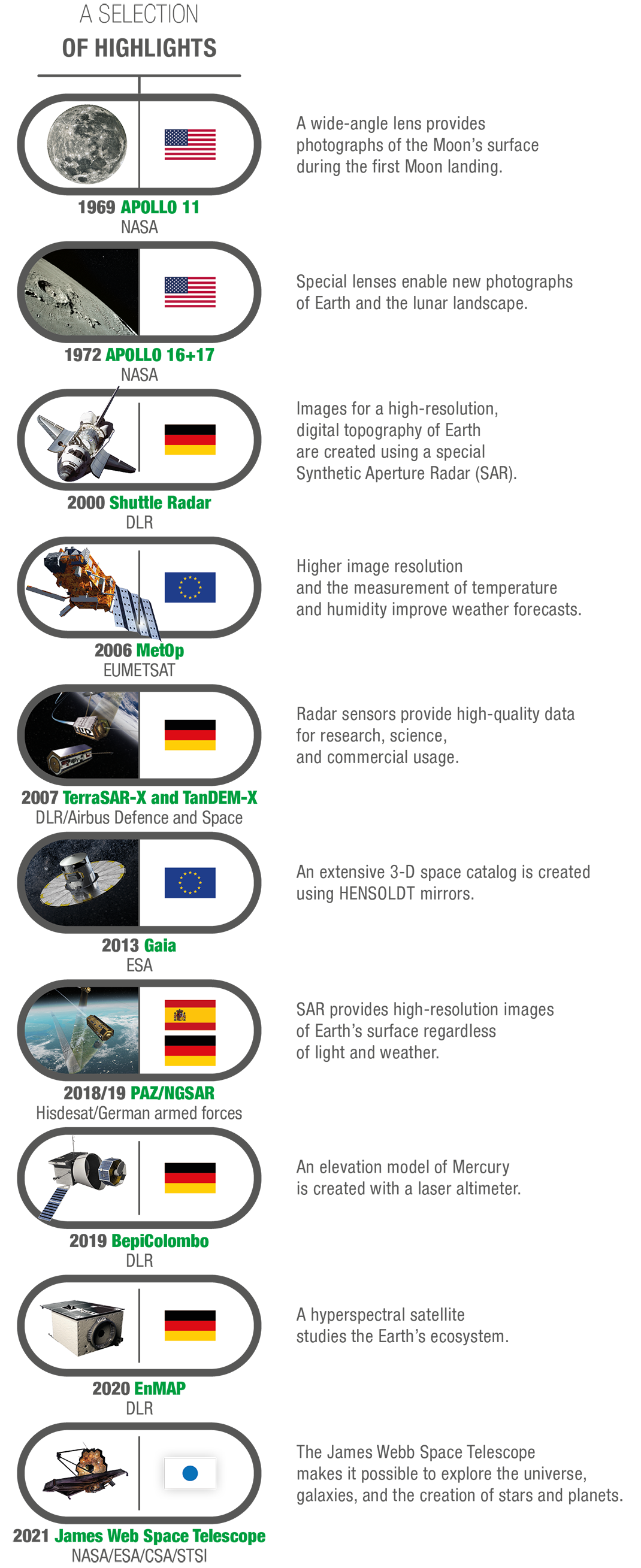
Fit for the Future
As a key pillar of the German, European, and other international air forces, the Eurofighter is one of the leading multipurpose fighter jets. With integrated sensor solutions from HENSOLDT, it is entering the next development stage for the coming decades. The same goes for HENSOLDT, as the company is, for the first time, handling the entire radar system in its largest contract to date.

Long Term Evolution – or LTE for short – is the name of the program that seeks to make the Eurofighter fit for the future until well into the 21st century, with integrated sensor solutions set to play a pivotal role in this regard. The intelligent networking of electronics and sensors will not only boost the performance capability compared to previous systems but will also open up completely new deployment scenarios in the medium term.
HENSOLDT – already the technology partner for numerous sensor, optoelectronic, navigation, and self-protection components of the Eurofighter – will now be taking on a much greater role. In respect of the new electronically scanned Mk1 radar, the company is, for the first time, responsible for the entire system design in tandem with industry partner Indra – and has also assumed the lead role for the project within the German–Spanish industry consortium. In addition, the potential for future self-protection systems is currently being analysed by HENSOLDT in a study on behalf of the Federal Office of Bundeswehr Equipment, Information Technology and In-Service Support (BAAINBw) that will run for several years. In order to face the threats of tomorrow – including those due to new networked antiaircraft systems, highly agile radars, and from cyberspace – the systems need to interact in the most interconnected way possible, which is currently also being analysed in companion studies.
The new Eurofighter Common Radar System (“ECRS”) Mk1 is underpinned by more than two decades of experience and development work on the part of the Eurofighter partner countries. As the logical successor to the Mk0 generation, this new electronically scanned radar offers numerous advantages in terms of surveillance, operation, and target detection/tracking, especially when compared to the CAPTOR-M previously used in most craft. Its modular design, powerful multichannel receiver, and pioneering architecture reduce repair and maintenance costs and facilitate step-by-step hardware and software upgrades starting from the Mk0 generation.
HENSOLDT will also be handling production of major components of the new radar system, including probably more than 250,000 transmitter/receiver modules (TRMs) for the future Mk1 antennae, as well as the multichannel receiver – the linchpin of the new radar. With an investment volume of some €1.5 billion, this represents the largest contract in the company’s history to date and is going hand in hand with an expansion in workforce and production capacity, especially at the highly specialized plant in Ulm. Here, the team is set to grow to up to 400 employees in the years ahead. Overall, HENSOLDT is planning to supply some 150 Mk1 radars for the Eurofighter fleet of the German air force alone.
The pioneering innovations of HENSOLDT are paving the way for the future of this fleet. Geared toward new requirements and equipped with the necessary data connectivity, the Eurofighter will become a central component of the Future Combat Air System (“FCAS”). Within the context of the Eurofighter Long Term Evolution program, HENSOLDT is able to contribute further technological expertise and thus put itself in an excellent position for FCAS – in line with the company’s own strategic direction and with a focus on integrated system solutions.
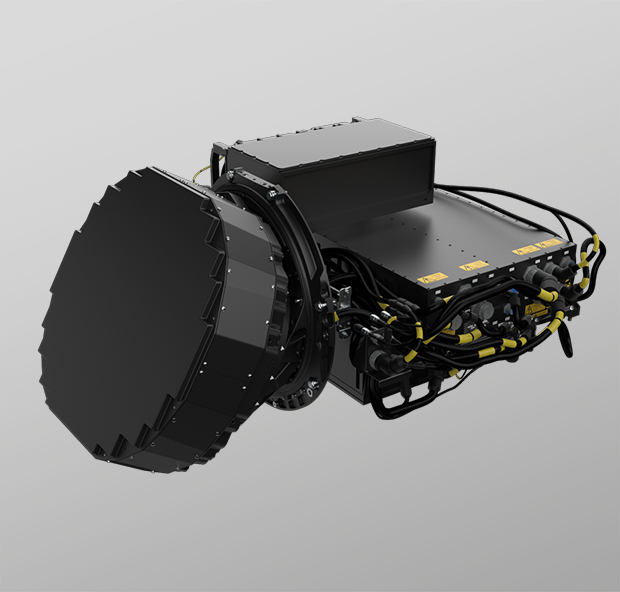
Eye of the Typhoon
Alongside the aircraft of the next Eurofighter tranche, “Quadriga,” many other current-generation Eurofighters, still fitted with the CAPTOR-M mechanical radar, will also be receiving the new Mk1 radar from HENSOLDT via hardware and software updates over the next few years. Instead of a mechanically scanned antenna, it boasts an electronically scanned antenna with more than 1,500 radiating elements. The ASEA (active electronically scanned array) technology underpinning the ECRS Mk1 combines ultra-high-resolution surveillance of the entire airspace with faster automatic detection and tracking of far more targets, as well as enhanced missile guidance. At the same time, it offers increased resistance against attempted interference, thus improving the survival prospects of the Eurofighter, even in intense conflict situations.
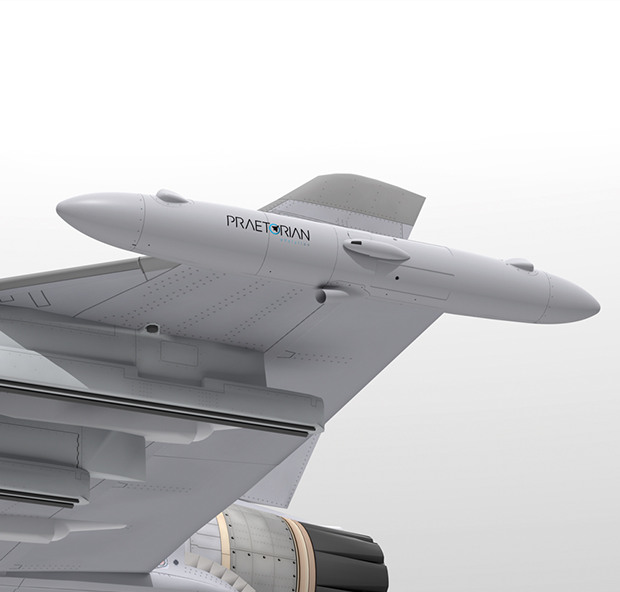
Built-In Life Insurance
Self-protection systems issue a warning as soon as the jet is picked up by a radar; they also detect hostile threats and can initiate countermeasures. In addition, the Euro Defensive Aids Sub System (“EuroDASS”) PRAETORIAN records and classifies all radar signatures using specific national mission data. Depending on the scenario, the pilot will be made aware of threats such as anti-aircraft systems and rockets as part of the situation report, with countermeasures taken either manually or automatically. These measures range from simple electronic interference techniques and the launching of decoy flares through to complex 3-D flight manoeuvre sequences and false-target techniques. In order to further optimize these essential protective features, HENSOLDT is working with consortium partners on the new PRAETORIAN eVolution self-protection system. Its technologies, modular system architecture, and far-reaching integration with the electronic Mk1 radar provide pilots in the German and Spanish fleets with effective self-protection at all times – from the equipping through to the decommissioning of the Eurofighter.

Rapid On-Site Assistance
If a Eurofighter is grounded due to a technical fault involving the radar or the self-protection system, action must be taken swiftly. Therefore, highly specialized HENSOLDT experts from the Technological Diagnostic Cell support the German air force by providing diagnostic, maintenance, and repair services at the Eurofighter squadron bases in Neuburg an der Donau and Laage, near Rostock. Thanks to their experience, which encompasses many years of close cooperation with the air force and the diagnostic teams of other Eurofighter nations, they are able to get the jets airborne again in next to no time. The diagnostic equipment RATE (radar automatic test equipment) – developed by HENSOLDT and expandable on a modular basis – is also used by other Eurofighter nations around the world; alongside fault detection, it also facilitates recertification for the aircraft’s next mission.
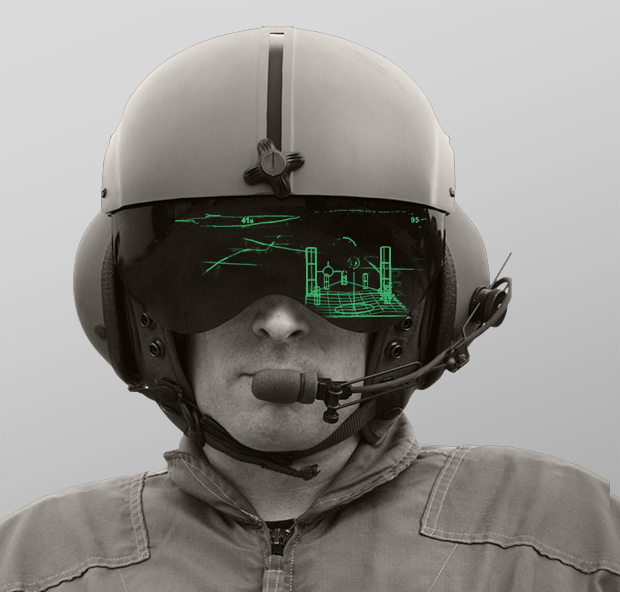
Intelligent Helmet
The helmet tracking system (HTS) developed by HENSOLDT South Africa detects in real time the direction in which the Eurofighter pilot is currently looking. As such, it is able to aim or set targets simply through eye contact. All fed-in information automatically follows the line of sight. On request, the helmet can also be fitted with a night vision device. Since the start of series production in 2008, HENSOLDT has supplied more than 700 helmets with night vision capability – just one example of the many items of kit and equipment that the company tailors to the requirements of the Eurofighter.
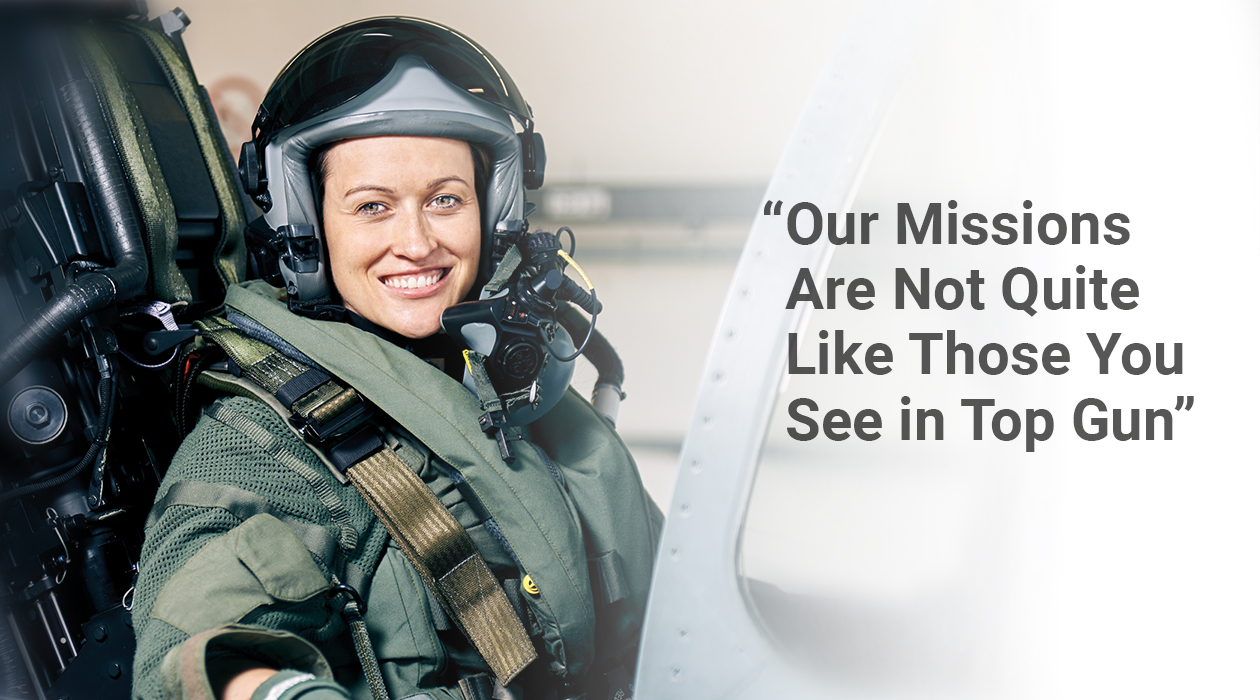
"Our missions are not quite like those you see in Top Gun"
Nicola Winter was Germany’s second-ever female fighter jet pilot and one of only three female Eurofighter pilots in the German air force. She now flies helicopters and works as an aerospace engineer at the German Aerospace Center (DLR e.V.).
What does it take to be a Eurofighter pilot?
The pilots of Eurofighters and other fighter jets are not highfliers. We simply do a very unusual job that requires a specific set of skills. The Eurofighter itself is extremely easy to fly. The exciting challenge is actually keeping track of so much information, so many tactics, and so many highly specialized systems during a mission.
And what does the Eurofighter bring to the table?
The Eurofighter is a multipurpose fighter jet that is suitable for a broad range of highly diverse deployment scenarios. As a generation 4.5 fighter jet, it already provides the pilot with excellent computer assistance. We fly the aircraft alone, without a weapon systems officer on board, and are required to handle highly complex missions and scenarios, both air to air and air to ground. To do so, we need excellent sensors and information processing to enable swift and precise implementation.
When does this sensor and radar technology become the difference between success and failure?
Our missions are not quite like those you see in Top Gun. We don’t just lock eyes with our enemies at a distance of 50 meters. The process begins when there are some two, three, four hundred kilometres between us and the enemy. That is why the radar acts as our eye. The better its range, resolution, presentation of information, and ease of use, the better I am as a pilot. A mission without radar would be akin to coming under attack in a building at night, with someone suddenly switching off the lights.
What stages have you seen for yourself in the evolution of radar technology and how have they changed the way in which people and sensors interact?
I still know Phantom pilots who would sit in the cockpit with pen and paper, making crosses to indicate the location of enemies. In the Tornado, I then had a radar on board with a relatively short range – and that was solely designed to identify targets on the ground. In the air, I was reliant on others telling me where my enemies were. In those days, the radar was operated by a weapon systems officer, who would adjust all kinds of cogs in order to manually set the width of the radius, the various frequency bands, the range, and the different radar modes. In the Eurofighter, this is all done automatically.
From a technological standpoint, what would you like to see in the next radar generation? Where is there still room for improvement?
Definitely in terms of user-friendliness. We still spend a considerable amount of time learning how to operate the cockpit and the individual sensors. This could be even more intuitive, which would make it easier for me as a professional to use in stressful situations. The second challenge lies in sensor fusion – that is, the collation of information from the radar, network, infrared sensor, and more to form an integrated report. In both regards, system design under one roof makes sense in terms of developing solutions even more closely in line with the user’s perspective.
HENSOLDT is currently developing an electronically scanned radar for the next generation of the Eurofighter. What advantages does this offer the pilot?
It represents a further significant improvement in terms of target resolution and range. It tells me at an earlier stage that enemies are heading toward me and how many of them there are. While I may only gain about ten extra seconds, these are extremely valuable, allowing me to determine my own tactics and respond correctly. What’s more, an electronic radar can detect and track far more targets simultaneously. This makes it easier to see the whole picture, especially when facing enemies who have a numerical advantage.
What is your view on the use of AI in fighter jet missions?
As a fighter jet pilot, I currently have to memorize hundreds of different hostile aircraft, antiaircraft systems, tanks, and ships – and then recognize and evaluate them on my screen. Here, AI can help us with visual detection patterns, especially when it comes to compliance with our rules of engagement. These form a highly complex set of rules that accounts for the majority of our work as pilots. For example, it may be the case that I am only authorized to pick up an enemy aircraft on my radar if it is heading toward me at a speed of more than 420 knots, at an altitude of over 10,000 feet, and at a 30-degree angle. Currently, I have to analyse all this myself in the air and save the information accordingly. Here, AI could potentially make an extremely valuable contribution, allowing me to concentrate on making decisions.
Among other things, HENSOLDT is working on the Future Combat Air System (“FCAS”). This is scheduled to become fully deployable around the year 2040. Why is it taking so long to develop?
We are now making a direct leap to the sixth generation of fighter jets. This will be a “system of systems,” that is, an interconnected military system comprising manned and unmanned system components that can be flexibly deployed within the network. This requires a very great number of technological quantum leaps – and that takes time. On top of that, this is an international program involving many different partners from a variety of nations. A mammoth task.
In your opinion, how will fighter jet missions change over the next few years?
The fundamental problems that we are seeking to solve with the military and fighter jets are not going to change. There are probably always going to be people who wish to inflict violence on others or drive them from their homes. The more precisely we can prevent them – while keeping outlay and, most importantly, damage to a minimum – the more successful we will be. That has to be our aim. We should endeavour to be so capable and effective that others don’t have any inclination to engage in conflict. Then we will have done our job.
